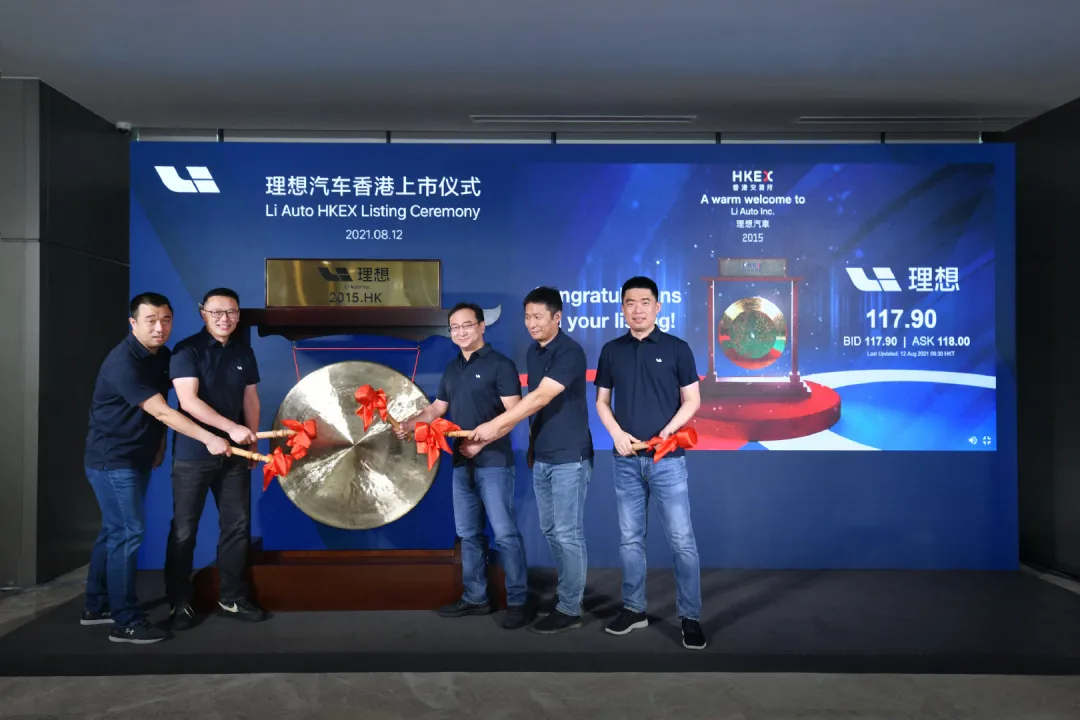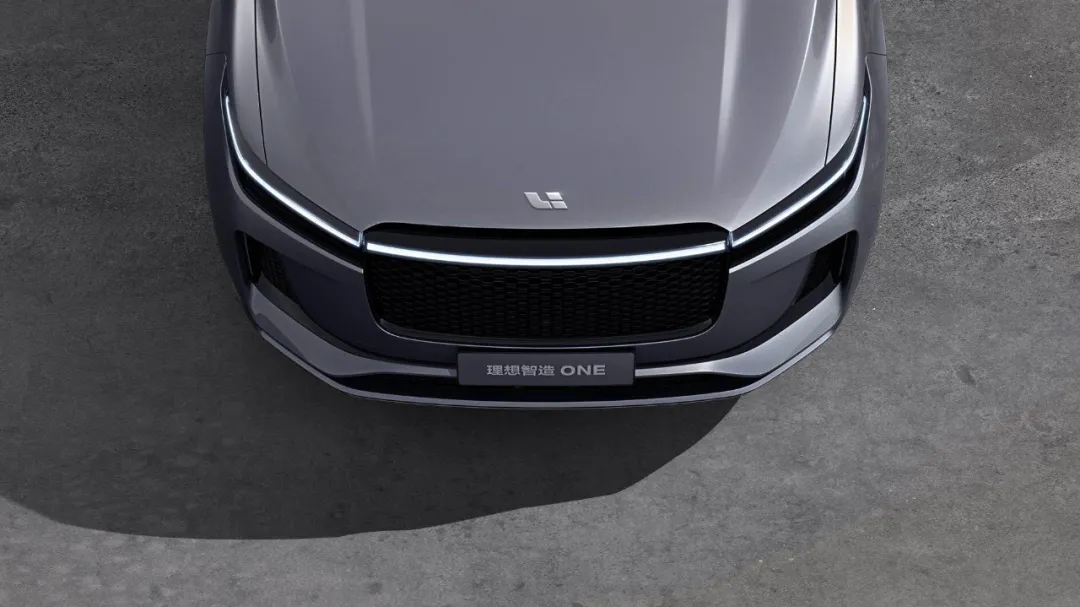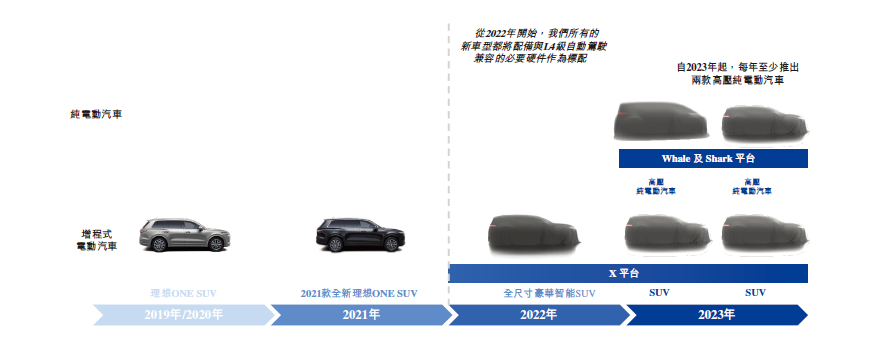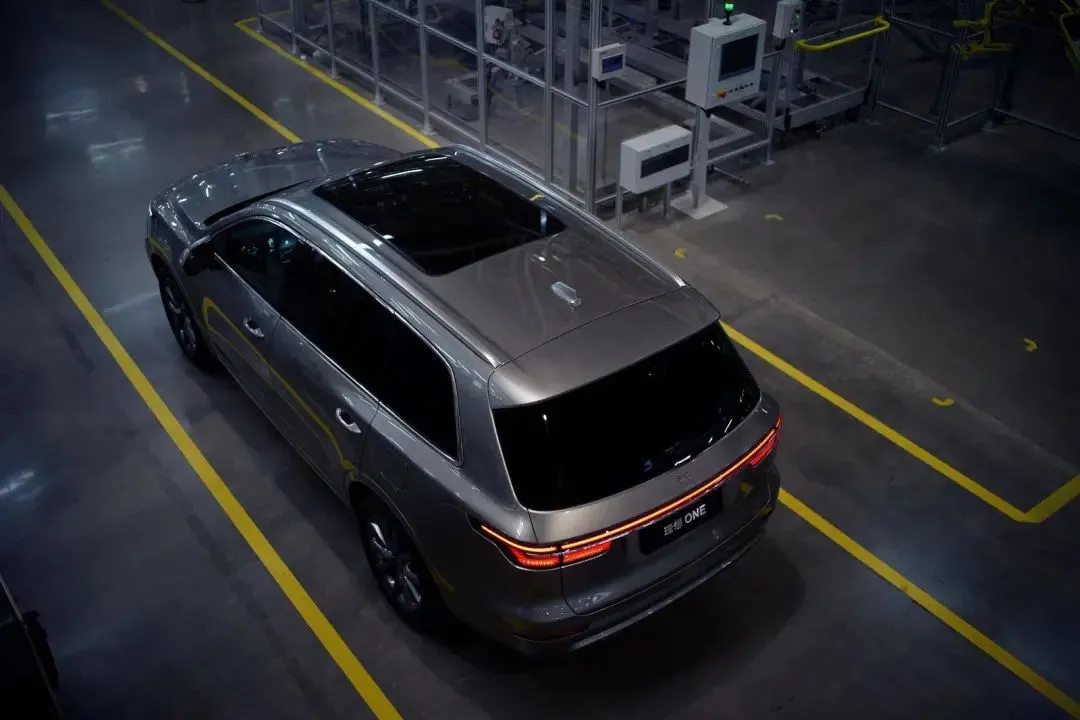IDEAL Automobile: From NASDAQ to HKEX
On August 12th, Ideal Automobile officially launched on the HKEX, only one year after its listing on NASDAQ on July 30, 2020. Ideal Automobile’s rapid completion of dual listings in the US and Hong Kong shows the company’s ambition.

Ideal Automobile’s Co-founder and CEO, Shen Yanan, stated that the HKEX IPO plan was launched after Ideal Automobile’s NASDAQ IPO last year. The main purpose was to attract more investment from the Asia-Pacific region, especially from China, in the mature capital market of Hong Kong. In addition, dual listing in Hong Kong and the US can better resist uncertainty.
As for where the raised funds will be used, Shen Yanan replied that they will be used for the research and development of Ideal Automobile’s next-generation products, focusing mainly on electric drive technology, 400 kW high-speed charging, autonomous driving, and intelligent cabin.
1.6 Million Vehicles
In February of this year, Ideal Automobile set a goal in their employee newsletter, claiming to become the number one intelligent electric vehicle enterprise in China by 2025. The company’s target corresponds to a quantifiable assessment, which is to achieve a 20% market share of China’s intelligent electric vehicle market by 2025, equating to 1.6 million vehicles sold.
For Ideal Automobile, with only one extended-range electric vehicle model currently on sale, achieving a leap from 30,000 vehicle sales in 2020 to 1.6 million vehicles in 2025 is reliant on the release of more vehicle models and entry into the pure electric vehicle field. Next-generation extended-range and high-voltage pure electric technologies are crucial to achieving this goal.

According to the prospectus, Ideal Automobile will launch X01, a full-size SUV model based on the new X extended-range platform, in 2022. The improvements of the X platform are mainly focused on the integrated extension system and motor, chassis size and vehicle passability, as well as the NVH performance.
In 2023, it will be an important milestone for Ideal Automobile’s electric drive strategy upgrade. Besides continuing to launch two X-series SUVs, Ideal Automobile will launch at least two high-voltage pure electric vehicles each year, coming from the performance-oriented Shark platform and space-limited Whale platform.
 In 2020 and beyond, we will see the implementation of Ideal’s next-generation electric vehicle (EV) technology, which includes CTP or CTC battery layout solutions, a high-voltage platform based on SiC modules, CO2 heat pump systems, and high-power charging networks.
In 2020 and beyond, we will see the implementation of Ideal’s next-generation electric vehicle (EV) technology, which includes CTP or CTC battery layout solutions, a high-voltage platform based on SiC modules, CO2 heat pump systems, and high-power charging networks.
To ensure production capacity, Ideal’s Changzhou factory plans to expand its annual output to 200,000 vehicles by upgrading production lines and reconfiguring them for the X01 model.
Ideal’s recently mentioned new factory is confirmed to be the first factory in Beijing’s Shunyi district previously operated by Hyundai. Regarding this factory, Shen Yanan stated that “Ideal will have plans to increase production capacity in Beijing, and it is indeed preparation for pure EV production. We will choose to mass-produce our pure EV models in 2023.”
The development of charging infrastructure will be a crucial step towards implementing Ideal’s dual-driven EV strategy, as competitors have already begun scaling up their charging networks. NIO has deployed 208 supercharging stations and 304 battery-swapping stations in China, while XPeng’s charging network has broken 230 stations, connecting the Shandong section of the Beijing-Shanghai expressway and the Henan section of the Beijing-Hong Kong-Macau expressway. As of the second quarter of this year, Tesla has over 2,966 supercharging stations worldwide.
Ideal’s goal is to establish a charging network “prior to the delivery of pure EV models,” with a three-tiered infrastructure design consisting of home chargers, existing public chargers (including small DC solutions), and high-speed chargers over 400 kW.
Ideal is also increasing investment in channels, leveraging the flow of commercial supermarkets to expand coverage and considering the establishment of central stores. By the end of this year, the company plans to open over 200 directly owned centers.
To achieve its goal of switching to a dual-driven EV strategy in 2023 and reaching 1.6 million vehicles by 2025, Ideal will need to integrate electric drive, fast charging, production capacity, charging infrastructure, and channel development. To realize this circular development, the company is committed to securing adequate reserves and funding channels, even at the expense of short-term stock prices.
Finally, another important purpose of Ideal’s Hong Kong exchange IPO is to raise funds for the development of autonomous driving and smart cabins.Ideal Car mentioned in its internal memo in February of this year that the pricing for its product plan would be between 1.5 and 5 million RMB. However, this was adjusted to 2-5 million RMB in its Hong Kong prospectus. Besides seeing the growth potential of the market, Ideal Car believes that this price range “aligns with the positioning of our luxury intelligent EVs, so we will set the price range at 2-5 million RMB.”
In fact, this involves the issue of the current threshold for intelligence. He XPeng, CEO of XPeng Motors, said, “To do well in intelligence and electric, 150,000 RMB is the basic price.” Obviously, in Ideal Car’s understanding, this threshold is 200,000 RMB, and Ideal Car is also optimistic about the prospects of autonomous driving and intelligent cockpit.
Shen Yanan said, “Ideal Car believes that after 2025, or in the near future, automatic driving will become a basic operating system of a car. In other words, if a car does not have Level 4 autonomous driving, it is like today’s smartphones without the function of taking pictures. We think it is a basic function.” It can be confirmed that Ideal’s next Level 4 autonomous driving model will be equipped with LIDAR, with the suppliers being Hesai and DJI.
In terms of intelligent cockpit, based on the intelligent interaction system of the current model, Ideal will add in-vehicle perception systems, fusion maps, vehicle cloud networks, etc. in the future.
In Ideal’s eyes, the endgame of intelligent electric vehicles competition is the competition of data and chips. For chips, Ideal does not currently have its own research and development plan, but chooses to cooperate with suppliers. Ideal has two principles for choosing chips:
- Strong correlation with product launch nodes
- Technical support capability and cost factors
The intelligent auxiliary driving chip of Ideal ONE has switched from Mobileye EyeQ4 to Horizon’s Journey 3. The reason behind this is that Horizon can collaborate with Ideal in full-stack research and development, which is conducive to Ideal’s next development. In contrast, Mobileye is a closed system.
Ideal’s X01, which will be launched in 2022, will use the Nvidia Orin platform, and the high computing power of Orin’s single chip, 254 TOPS, is what they value.
Shadow Mode for More Accurate Data Collection
To better understand driver behaviors and make improvements to their autonomous driving algorithm, the Ideal team has introduced the “Shadow Mode” feature which uploads driving scenarios and decision data to their self-developed data platform. The 2021 Ideal ONE model has already achieved L2+ ADAS functions, and will soon implement NOA functions which can be upgraded through OTA updates to enhance the driving experience. Currently, there are 400 members in the Ideal autonomous driving R&D team, and the team is expected to expand to 600 members by the end of this year.
Hong Kong Stock Boom
XPeng Motors was listed on the Hong Kong Stock Exchange on July 7th, while Ideal completed their IPO today. NIO had submitted two applications to the Hong Kong Stock Exchange in March and May, but seems to have encountered some obstacles in the process.
There are three ways for Chinese ADR companies to return to the Hong Kong capital market: privatization and relisting, dual listing, and secondary listing. Choosing the route of dual listing, the company’s shares can be traded across markets through international trustees and securities brokers, but the threshold is relatively high. Despite the limitation of non-cross-market transactions, both XPeng and Ideal are willing to face the more complicated procedures, incur higher time and costs, and choose dual listing in Hong Kong to take advantage of the valuable new energy development window.
While XPeng and Ideal have both established themselves in the smart electric vehicle market, their competition is far from over. According to Li Xiang’s internal employee letter in February, referencing the market share of Chinese smartphones in 2020, the top five brands held 96.5% of the market share. Similarly, it is predicted that to become a leading company in the global smart electric vehicle industry, one needs to acquire at least 25% of the global market share by 2030.
In addition, He XPeng gave a clearer idea of the cost involved in entering the market: “If making cars from scratch costs 20 billion RMB, then at least another 30 billion RMB is needed for research and development, globalization, and organizational expansion.”Shen Yanan said that the gross profit margin of Li Auto this year will reach 19%-20%, but the net profit may still be in a state of loss in the short term. Looking back at Li Auto’s financial reports in recent years, it recorded a net loss of CNY 1.5 billion, CNY 2.4 billion, CNY 150 million, and CNY 430 million in 2018, 2019, 2020, and the first two quarters of 2021 respectively.
The capital market is still an important source of funds for Li Auto. “The US stock market, the Hong Kong stock market, and the A-share market are all part of our plan to expand funding channels as a whole, so we do not exclude the possibility of returning to the A-share market.”
At present, the new energy sector is a hot topic. If Li Auto waits for two years to go public and then return to Hong Kong through secondary listing, it is likely that the market will have already changed, and its fundraising will face more uncertainties. In short, fundraising should be done as soon as possible.
On the other hand, on July 10th, the Cyberspace Administration of China publicly solicited opinions on the “Network Security Review Measures (Revised Draft)” and proposed that operators who hold personal information of more than one million users and plan to go public abroad must apply for cybersecurity review from the Cyberspace Administration.
Although the size of WeRide, XPeng, and Li Auto is only around 100,000 vehicles, the complexity of smart connected vehicle data far exceeds that of other industries. On April 28th, the National Information Security Standardization Technical Committee issued a notice on soliciting opinions on the “Security Requirements for Collection of Data on Intelligent Connected Vehicles in Information Security Technology Standards” draft, placing the management of smart vehicle data issues on the table.
Beyond the Pacific Ocean, in December 2020, the United States passed the “Holding Foreign Companies Accountable Act,” which enables regulatory agencies to oversee all audit materials and data of foreign companies listed in the United States. Data security issues have risen to the level of national security, and when combined with the global political and business environment, companies with smart connected vehicle data need to be cautious, as Didi has become a cautionary example. Therefore, we can understand why “dual listing in Hong Kong and the US can better resist uncertainties.”

This article is a translation by ChatGPT of a Chinese report from 42HOW. If you have any questions about it, please email bd@42how.com.